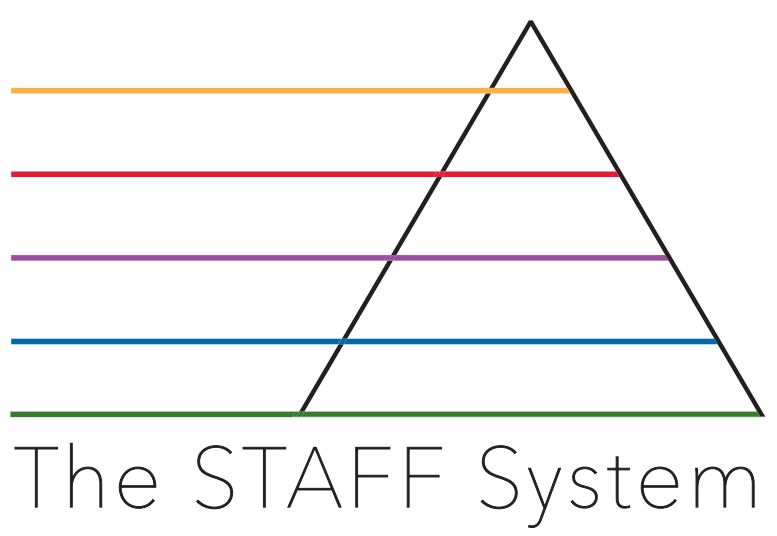Before getting into this second system, a bit of “forward promotion.” The five systems of your school will be highlighted weekly, and followed by an article that explains the interaction of systems at work in every organization, but, the purposes of this site, faith-based and, to some extent, private, schools. Several years ago, these articles were preceded by the explanatory article to set the stage for examination of the elements, but the article was so overwhelming that some time was needed to process the information. Further, since these “Tetrahedronics” articles were published weekly, it took some time to digest the concepts presented. This is why they’re now presented monthly.
So on to the second system, and the one which applies to the essence of SchoolAdvancement.com.
Last month, the first system of your school was defined as five elements that work together and identify your faith-based or private school as an educational environment. To review, those five elements are Faith Identity or Founder’s Heritage, Activities, Curriculum, Technology and Surroundings. It may help to think of these areas as associated with the “left side” of the brain, since they deal with the “factual” or logical elements that make a school, “a school.”
If we look at the “right side” of the brain, then, we can see there is a different system in place. The first letters of the five elements of this system, namely Development, Retention, Enrollment, Asset Management and Marketing, form the acronym DREAM. It describes the system of Advancement that balances out the scholastic attributes of the FACTS side.
Note that while FACTS are factual data or pieces of logical information and can be associated with left brain function, the DREAM is the creative “right side” of the brain, which is more abstract in nature. Here’s an interesting comparison to consider. In academics, the highest grade a student can receive, without extra credit points, is a score of 100%. In activities, there can be a championship level which teams strive for. It’s the goal of many schools today to have one-to-one technology programs in place so that every student has a piece of computer technology to assist them in performing tasks that make learning and collaboration possible in today’s classrooms and cloudspaces.
But in Development, how many dollars raised is considered “enough” to support this year’s budget? How many additional students are considered to be “enough” for the upcoming school year? How much marketing is “enough” before your constituent communities tire of hearing your message? With DREAM, and a nod to the movie “Mean Girls,” the limit does not exist.
As time has progressed, however, the DREAM acronym has been changed to ARMED, because a dream remains a dream until a plan of action is put into place to make it a reality. Further, schools have experienced significant challenges to their very existence in recent years, and now, current events such as the coronovirus pandemic, the resultant unemployment, and bankruptcies of religious organizations have placed previously unimaginable strains on the resources required by schools to operate. The ARMED acronym reminds us that not only must we be prepared, but aligns the elements required for building a solid financial foundation for the school’s stabilization, growth and sustainability.
There are abundant articles on this site that show how these five elements interact with one another in a system essential to your school’s success. The problem is that schools continue to place their emphasis on the left side rather than giving equal status to the elements on the right side. Isn’t it interesting that in education today, the emphasis continues to be on the academics and testing, and not so much on the creativity expressed on the right side of the brain, even though activities like music engage both sides of the brain and contribute to significant advancement relative to achievement. Perhaps one reason for this reality is that educators are experts in the aspects of pedagogy, scaffolding, and metacognition, and may receive one class (not course, but class) on budgeting, or, if they’re lucky, on the effects of the cohort-drop method of determining school enrollment. Moreover, these classes may be part of a doctorate in educational leadership, and not part of a state’s school principal certification program.
It makes logical sense, then, that placing an equal importance on advancement will lead to greater achievements in the school, which will lead to greater engagement with donors and benefactors, which will lead to…you get the idea. Success indeed begets success. When the advancement side starts to deteriorate, then the educational program can start to suffer, as classrooms shrink and grade levels are combined, cause additional parents to seek an alternative educational environment, which erodes the advancement side further, perpetuating a downward spiraling vortex. We really don’t need to do anything to make that happen since gravity does most of the work. It stands to reason, then, if we don’t do anything to stabilize the situation by focusing on the ARMED side to make sure our schools are prepared for success, a school caught in the downward vortex will continue to deteriorate.
It is this system that is associated with the argument that a school is a business. Make no mistake, it IS a business, since if this system does not function properly, and all elements of the system are addressed, the school will continue to struggle, shrink, perhaps merge, and, as we see all to often today, close. Next week, we’ll look at the system that makes a faith-based school a ministry – in addition to being a business and a school.
© Michael V. Ziemski, SchoolAdvancement, 2012-2020

